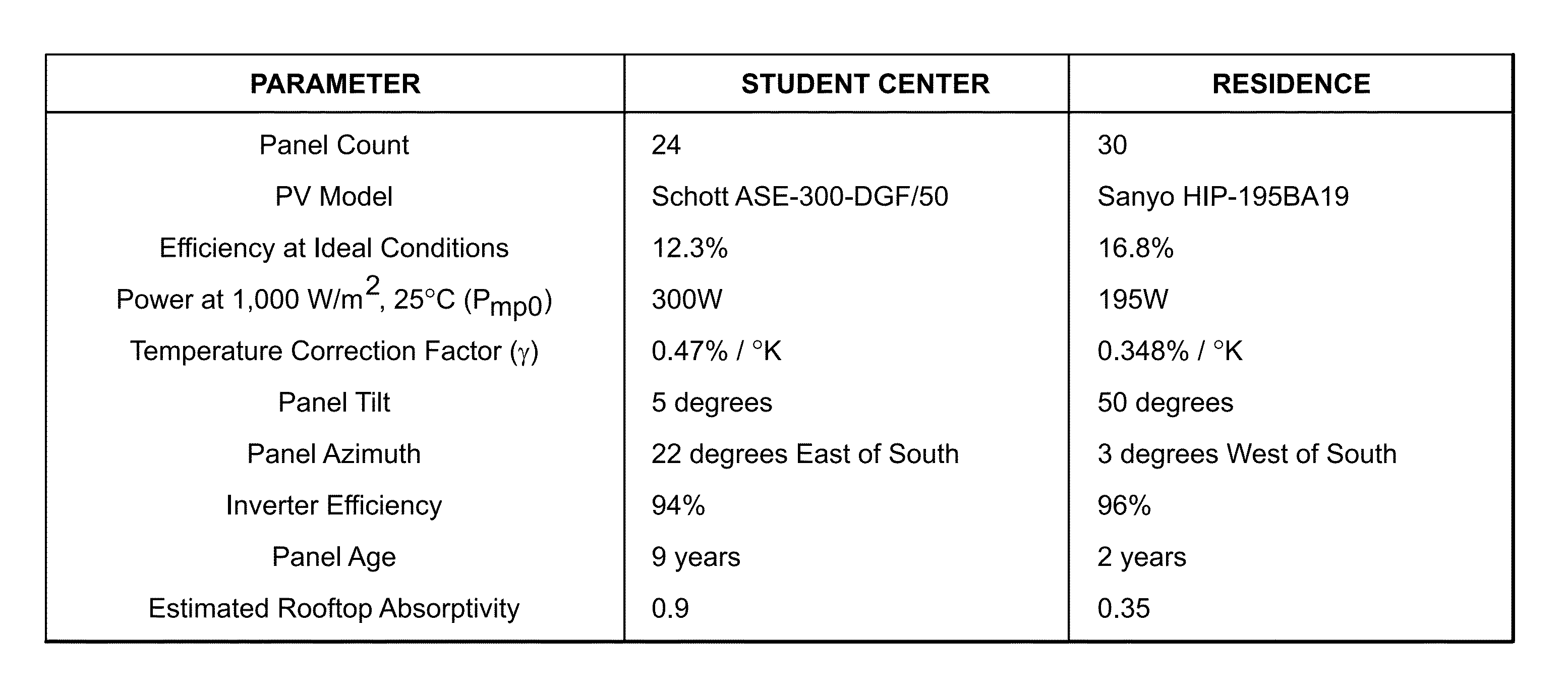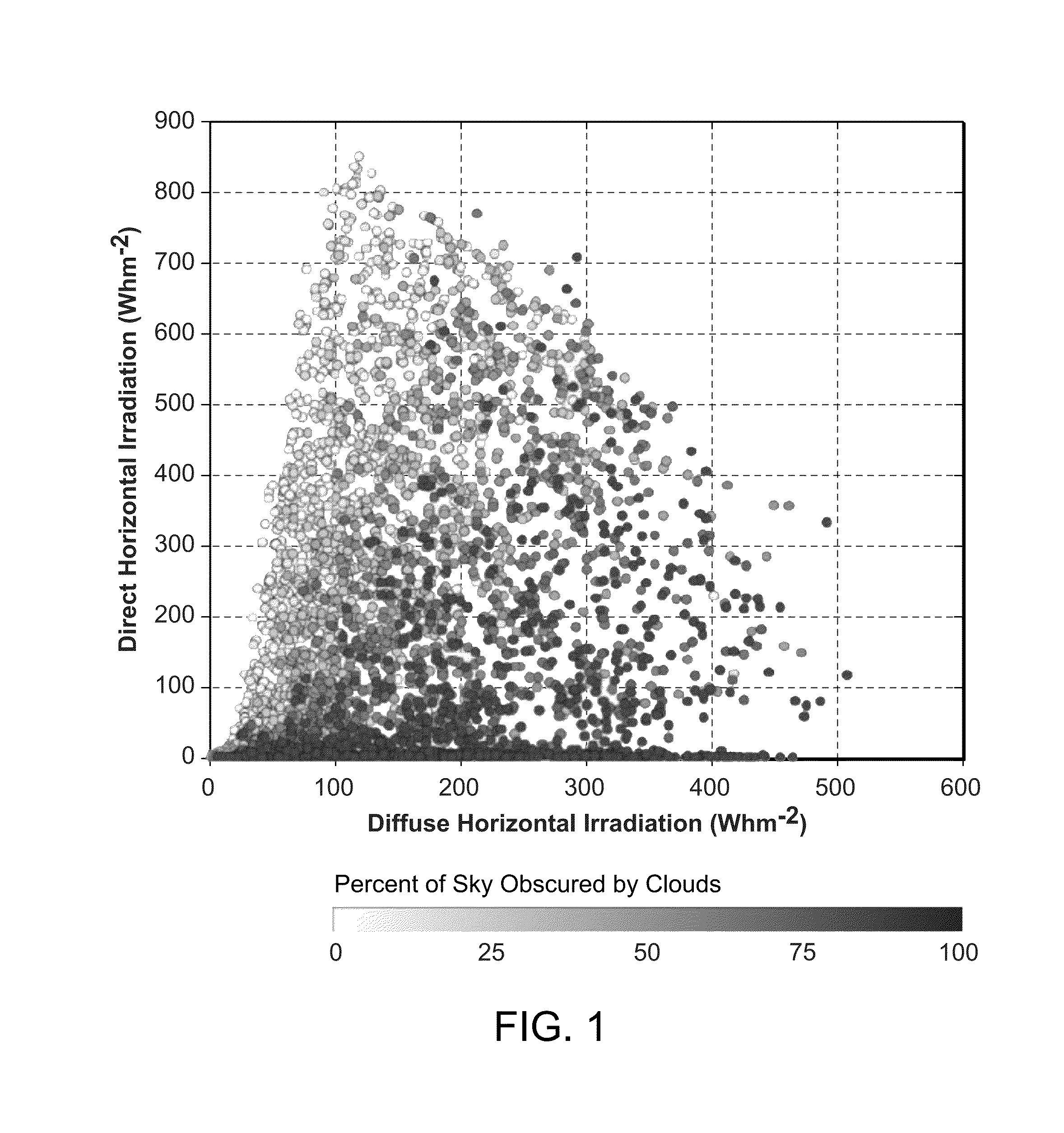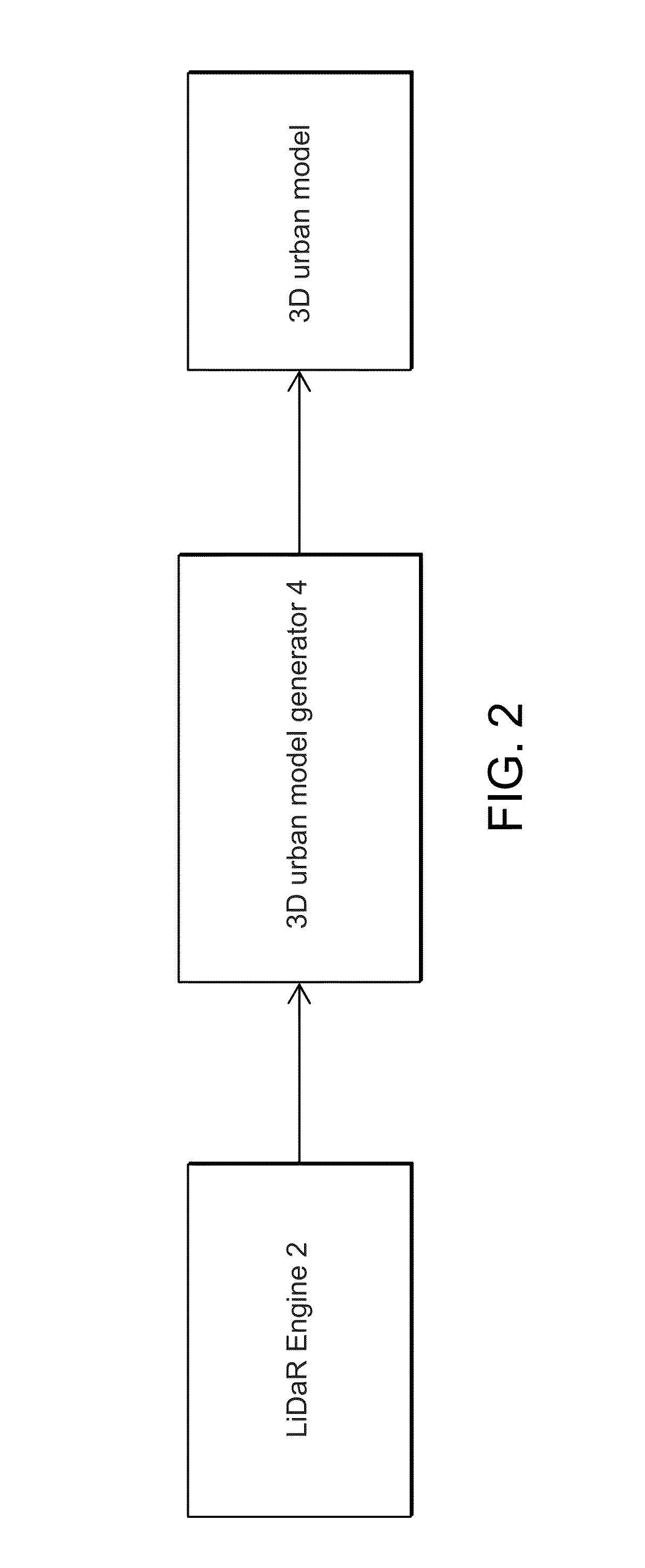Urban mapping technique for photovoltaic potential of rooftops
a technology of photovoltaic potential and rooftops, applied in the field of urban mapping techniques for photovoltaic potential of rooftops, can solve the problems of inability to model shading and reflections from adjacent urban surfaces using pvwatts, limited attention paid to assumptions and calculation methods underlying these maps, and obvious errors in neglecting variance, etc., to achieve highly accurate and detailed 3-d, and simplified lidar data
- Summary
- Abstract
- Description
- Claims
- Application Information
AI Technical Summary
Benefits of technology
Problems solved by technology
Method used
Image
Examples
Embodiment Construction
[0028]The invention demonstrates and validates a method for predicting city-wide electricity gains from photovoltaic panels based on detailed geometric urban massing models combined with DAYSIM-based hourly irradiation simulations, typical meteorological year climactic data and calculated rooftop temperatures. The resulting data can be combined with Google Maps™ type online search engines and a financial module that provides building owners interested in installing a photovoltaic system on their rooftop with meaningful data regarding spatial placement, system size, installation costs and financial payback.
[0029]Overall the method constitutes a first attempt at linking increasingly available GIS and LiDAR based urban databases with state-of-the-art building performance simulation engines. A comparison of irradiation simulations and geometry generation methods reveals that the new methodology outperforms its predecessors as it produces hourly data, supports better geometric accuracy, ...
PUM
 Login to View More
Login to View More Abstract
Description
Claims
Application Information
 Login to View More
Login to View More - R&D
- Intellectual Property
- Life Sciences
- Materials
- Tech Scout
- Unparalleled Data Quality
- Higher Quality Content
- 60% Fewer Hallucinations
Browse by: Latest US Patents, China's latest patents, Technical Efficacy Thesaurus, Application Domain, Technology Topic, Popular Technical Reports.
© 2025 PatSnap. All rights reserved.Legal|Privacy policy|Modern Slavery Act Transparency Statement|Sitemap|About US| Contact US: help@patsnap.com



